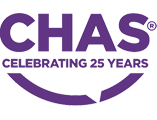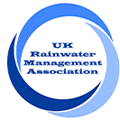What is a Combi Rainwater Harvesting System?
31/03/2023
Rainwater harvesting systems are becoming commonplace in many buildings across the UK. With a rising tide of regulations surrounding sustainable drainage, it is important everyone understands the different systems on offer. After all, the buildings we are constructing now may still be operating in 50 years’ time, so every developer and contractor should be considering improved water efficiency on projects. Today, we are going to be using this blog to explain more about the Stormsaver Combi Rainwater Harvesting System which is the most common type of rainwater harvesting installation in the UK.
First things first, the name ‘combi’ refers to the type of control panel for the rainwater harvesting system. Stormsaver developed the unique Combi Rainwater Harvesting System to combine the benefits of pressurised, and gravity fed systems. Unlike pressurised and gravity fed systems, the combi control unit contains pumps, controls, automatic mains water top up, and break tank in one unit.
Our combi control unit can be supplied in a range of capacities, including 225, 400, 620 litres. This refers to the break tank capacity and is sized by our team based on your demand.

Just like any other system, rainwater is collected via roof drainage points and fed into a pre-tank filter arrangement. This filter removes debris such as, leaves and avion items. The Combi control unit is compatible with both above ground and below ground storage tanks.
When demand for a sustainable supply is detected by the control panel, reclaimed rainwater is drawn through a submersible pump and into the break tank. During periods of low rainfall, our control panel will automatically top up the break tank with mains water ensuring it can always deliver a constant supply. TIP: cheaper systems may undersize the break tank to save on costs, but this can lead to system failure within the first 12 months as supply cannot keep up with demand.
Reclaimed rainwater is then distributed to usage point via our variable speed booster set. Not only do variable speed pumps reduce energy consumption, but they can also extend the life of the pump. TIP: Alternative systems will use fixed speed pumps as they are cheaper. Yet these pumps will have a reduced lifespan compared to variable speed solution.
Learn more about how the combi rainwater harvesting systems works here.
We offer a FREE Rainwater Harvesting CPD service for organisations looking to learn more about water reuse. Book here or get in touch with our team here.

My role as a Water Reuse Specialist means I get to keep up to date with all things water conservation. My favourite water saving tip is to turn taps off when brushing your teeth! I think rainwater harvesting and the water reuse industry is exciting, and I love sharing updates with our customers. View Matt’s Stormsaver profile here.
Terms & Privacy Policy Cookie Policy Site Map
Copyright © 2024 Stormsaver Ltd. All Rights Reserved.





